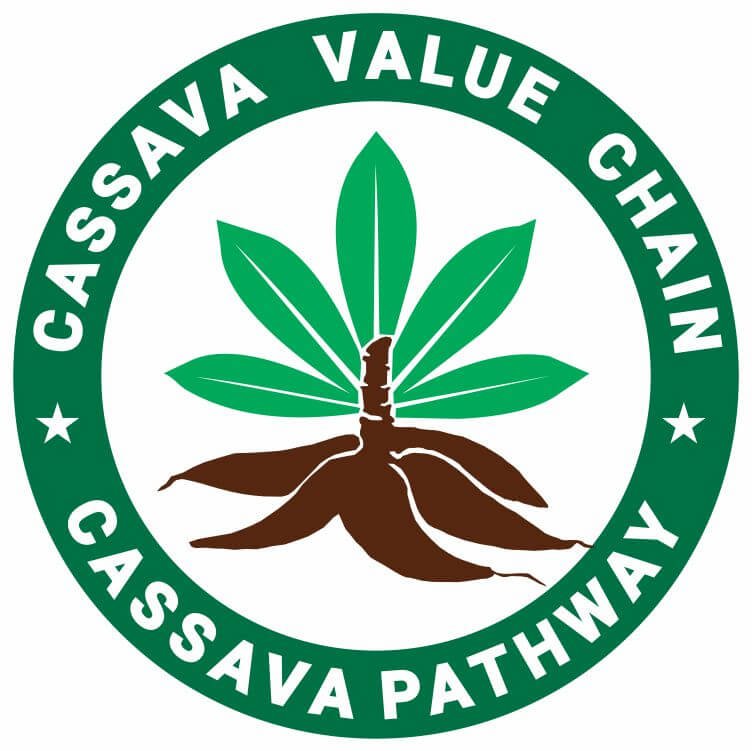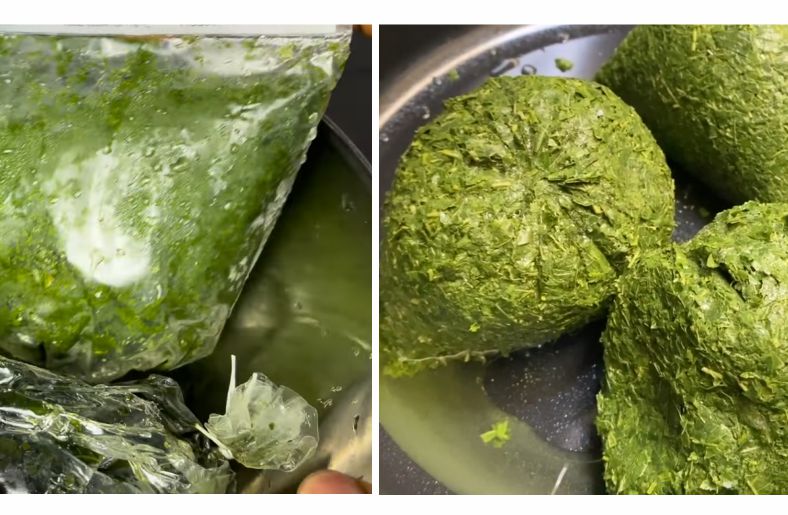Frozen cassava leaves bring authentic taste and rich nutrients to your kitchen. Perfect for quick meals, they offer year-round convenience without sacrificing traditional flavor or cooking versatility.
Frozen chopped or crushed leaves of cassava are packed with flavor and make cooking easier without losing the traditional taste you love.
You don’t need to live near a tropical farm to enjoy them.
These leaves are cleaned, prepped, and frozen shortly after harvest so you can focus on making your stew, soup, or side dish without the hassle.
They’re rich in nutrients like vitamins A and C, plus protein, and bring the same bold flavor you expect from fresh ones.
If you’re leaning into plant-based meals or just want something that tastes like home, frozen cassava leaves give you both.
No pounding or peeling. Just open, cook, and enjoy.
Whether you’re making a pot of Pondu or Saka Saka, frozen cassava leaves let you enjoy authentic food without spending hours in the kitchen.
Table of Contents
- Quality Matters: Assessing Frozen Cassava Leaves
- Convenience of Frozen Cassava Leaves
- Culinary Uses for Frozen Cassava Leaves
- Cooking Tips for Frozen Cassava Leaves
- Recipe Ideas Using Frozen Cassava Leaves
- Frequently Asked Questions
- Conclusion
Quality Matters: Assessing Frozen Cassava Leaves
Frozen cassava leaves can bring bold flavor to your kitchen, but only if you choose the right pack.
Here’s what you should check before adding them to your basket.
Check the Packaging First
Always look closely at the packaging before you buy. Choose sealed packs that feel firm and show no signs of freezer burn.
If the package is clear, take a quick look inside.
You’re looking for deep green leaves with no ice build-up or strange discoloration.
Too much frost or pale patches may mean the product has been sitting too long in poor storage.
Good packaging protects the leaves and helps lock in flavor and nutrients.
Look at the Freezer Setup
Don’t ignore the state of the freezer. If you notice ice build-up on the walls or temperature fluctuation, it’s a red flag.
Frozen cassava leaves should stay at a steady low temperature to preserve their taste and nutrients.
Retailers that care about food quality will keep their freezer units clean, organized, and properly maintained.
Buy from shops where frozen items feel rock-solid and the freezers aren’t overloaded or left open.
Check for Freezing or Packing Dates
Find the date on the label before you buy. Cassava leaves are best when frozen shortly after harvest.
A more recent date usually means better flavor and texture. Old stock can leave you with dry or bland results in your soup or stew.
If the product has no date listed or the writing is faded, it’s better to skip it.
Fresh frozen leaves should feel firm and slightly flexible when gently pressed.
Keep Ingredients Simple
Take a second to check the ingredient list. The best frozen cassava leaves should list only cassava leaves or maybe saltwater if pre-soaked.
Too many preservatives or additives may affect the flavor and reduce the quality of your dish.
Clean labels usually mean cleaner taste. If you’re making traditional recipes, simpler ingredients give you more control over the final flavor and texture of your food.
Related Posts
- The Many Cassava Leaves Benefit
- How to Prepare Cassava Leaves
- Delicious Cassava Leaves Recipes
- The Cassava Leaves Soup: Everything to Know
- The Magic of the Cassava Leaves Stew
- Fufu with Cassava Leaves
- How to Pair Cassava Leaves and Rice
Convenience of Frozen Cassava Leaves
Frozen cassava leaves make your cooking faster and easier without losing flavor.
You get the benefits of fresh greens without the time or stress that comes with preparing them.
Save Time with Prepped Leaves
If you’ve cooked fresh cassava leaves before, you know the work it takes. Washing, cutting, and boiling can easily eat up your time.
Frozen cassava leaves come ready to use. They’re usually cleaned and blanched before packaging.
That means you can go from freezer to pot in minutes. It’s a smart way to cook on busy days without skipping quality or taste.
Stock Up Without Worry
One of the best things about frozen cassava leaves is how long they last.
You can store them in your freezer for months without worrying about spoilage.
Unlike fresh greens that go bad quickly, frozen packs stay good as long as they remain sealed and cold.
This gives you the freedom to buy in bulk and cook when it suits your schedule.
Cook What You Want, When You Want
Frozen cassava leaves fit into all kinds of meals. You can throw them into stews, simmer them with spices, or stir-fry with fish or meat.
Because they’re already softened during the freezing process, they absorb flavor well and cut down your cooking time.
You don’t need to adjust your favorite recipes. Just add and cook it the way you like it.
Eat Better With Less Stress
When life gets busy, it’s easy to reach for less healthy food. But frozen cassava leaves help you stick to better eating without much effort.
They’re full of nutrients like vitamins A and C, and they work with many clean, home-cooked recipes.
Keeping them in your freezer means one less thing to plan, prep, or stress over at mealtime.
Recommended: What is Pondu? Everything to Know
Culinary Uses for Frozen Cassava Leaves
Frozen cassava leaves can add a bold, earthy flavor to everyday cooking.
You’ll find them useful in both traditional recipes and creative twists you can make at home.
Cook Traditional Meals with Less Prep
You can enjoy dishes like fufu, saka saka, or palaver sauce without spending hours preparing fresh leaves.
Frozen cassava leaves are ready to go. Just thaw and simmer with your favorite spices, ground peanuts, or palm oil.
These dishes are common in Congo, Sierra Leone, and parts of West Africa.
They are filling, flavorful, and easy to make using frozen leaves, especially when paired with rice, yams, or boiled cassava.
Add Them to Soups and Stews
If you already cook spinach or kale into your soups, cassava leaves will fit right in.
Add a handful to chicken stew, fish soup, or vegetable broth for added depth. The leaves hold up well during simmering and soak in spices nicely.
Their rich green color and earthy taste can bring new life to recipes you already make.
Frozen cassava leaves also pair well with ingredients like garlic, onions, chili, and coconut milk.
Blend into Smoothies or Salad Mixes
For a more creative use, blend frozen cassava leaves into green smoothies.
Just thaw and blend with bananas, pineapples, or cucumber.
You get the benefit of extra nutrients without overpowering the drink.
If you prefer savory meals, try mixing thawed cassava leaves into grain bowls or chopped salads.
Their soft texture and deep flavor go well with roasted vegetables, beans, and light dressings.
Try Them in Snacks or Appetizers
Cassava leaves can also work in small bites. Mix them with spices or soft cheese, then fold into puff pastry for baked pockets.
They make great starters or sides.
You can also dry them out and season them with salt, garlic powder, or pepper for a healthier chip option.
These snacks are easy to prep, store well, and add variety to your weekly meals.
Cooking Tips for Frozen Cassava Leaves
Frozen cassava leaves are simple to work with once you understand a few key steps.
Here’s how to get the best taste and texture out of every pack.
Thaw Slowly for Better Texture
Move your frozen cassava leaves from the freezer to the fridge the night before you plan to cook.
This slower thawing method helps the leaves stay soft and whole.
Avoid using heat or hot water to thaw them, as it can cause the leaves to break apart or lose their fresh taste.
If you need to cook right away, place them in cold water for about 30 minutes instead.
Adjust Cooking Time Based on the Dish
Your cooking time depends on what you’re making. For stir-frying or sautéing, five to seven minutes is usually enough.
If you’re adding them to soups or stews, let them simmer for 15 to 20 minutes.
Taste the leaves while they cook so you can stop when the texture feels right. Overcooking can make the leaves too soft or dull the flavor.
Pair with Strong Aromatics
Frozen cassava leaves go well with bold flavors. Onions, garlic, and ginger work well when sautéed before adding the leaves.
They help bring out the earthiness of the greens and balance their slight bitterness.
You can also add chili peppers or ground crayfish for a deeper flavor.
These pairings turn simple leaves into rich, satisfying meals you’ll want to make again.
Use Acids to Balance Flavor
A splash of lime juice or a spoonful of vinegar at the end of cooking can lift the flavor of cassava leaves.
These acids cut through the richness and give the dish a bright finish.
This works especially well in soups or when serving with starchy sides like yam, rice, or cassava.
Try adding the acid a little at a time so you get the balance just right.
Recipe Ideas Using Frozen Cassava Leaves
Frozen cassava leaves make cooking easier while giving your meals a deep flavor.
You can try different recipes, no matter your cooking level or food preferences.
Cassava Leaf Stew for Hearty Meals
Start with a base of onions, garlic, and tomatoes. Let them cook down before adding frozen cassava leaves and your protein of choice: chicken, beef, lentils, or tofu.
Add seasonings like paprika, cayenne, or stock cubes and let it simmer until everything is tender.
This stew is filling and works well with rice, boiled plantains, or fufu. It’s a one-pot dish that brings comfort and rich, earthy taste to your table.
Light and Fresh Cassava Leaf Salad
Thaw your frozen cassava leaves and blanch them quickly to keep their color.
Cool them down and mix with sliced cucumbers, cherry tomatoes, and red onions.
A simple dressing with lemon juice, olive oil, and salt ties it all together.
You get a fresh and healthy side dish that goes well with grilled fish, roasted meat, or a light lunch plate.
This salad is also a fun way to eat more greens.
Smoothies with a Green Boost
If you make smoothies at home, frozen cassava leaves can give them a healthy twist.
Thaw a small portion and blend it with bananas, mango, or pineapple. Add a splash of coconut milk or orange juice for flavor and texture.
The leaves mix in easily and give you an extra serving of vegetables without changing the taste too much.
It’s a smart way to sneak more nutrients into your day.
Quick Stir-Fry with Garlic and Chili
Try a simple stir-fry by heating oil in a pan and adding garlic, chili, and onions. Toss in the thawed cassava leaves and stir until heated through.
Add soy sauce or a dash of stock for flavor. This dish comes together in minutes and works well as a side or a topping for rice and noodles.
It’s a fast way to enjoy cassava leaves on a busy day.
Frequently Asked Questions
How long can frozen cassava leaves stay in the freezer?
Frozen cassava leaves can last up to 12 months if stored properly at a constant low temperature in an airtight, moisture-proof container or packaging.
Do I need to cook frozen cassava leaves before eating?
Yes, cassava leaves must always be cooked before eating to remove natural toxins and improve texture and taste, even when they come frozen.
Can I use frozen cassava leaves in place of spinach or kale?
Yes, you can substitute them in many cooked recipes, but they have a stronger flavor and need longer cooking time compared to spinach or kale.
Are there any health risks with frozen cassava leaves?
Only if undercooked. Always boil or simmer properly to remove natural cyanide compounds. When prepared right, they’re safe and packed with nutrients.
Conclusion
Frozen cassava leaves offer both flavor and convenience. From stews to smoothies, they fit easily into different recipes without losing their nutritional value.
You don’t need long prep times or special skills to enjoy their benefits, just proper thawing and cooking.
Whether you’re making a hearty family meal or adding greens to your diet, frozen cassava leaves can meet your needs.
By knowing how to pick, store, and cook them right, you bring traditional flavor and smart nutrition to your table with less hassle.
Make room for this freezer-friendly green in your kitchen and see how it transforms your meals with simple, earthy taste.

Chimeremeze Emeh is a writer and researcher passionate about Africa’s most transformative root crop—cassava. Through his work at cassavavaluechain.com, he explores the entire cassava industry, from cultivation and processing to its diverse applications in food, health, and industrial use.
He also writes for palmoilpalm.com, where he shares his extensive experience and deep-rooted knowledge of palm oil, covering red palm oil, palm kernel oil, and refined products. His work there reflects his lifelong connection to agriculture and his commitment to promoting sustainable value chains in Africa.
Driven by curiosity and purpose, Chimeremeze aims to shed light on how cassava continues to empower communities, strengthen food systems, and link traditional farming wisdom with modern innovation.

